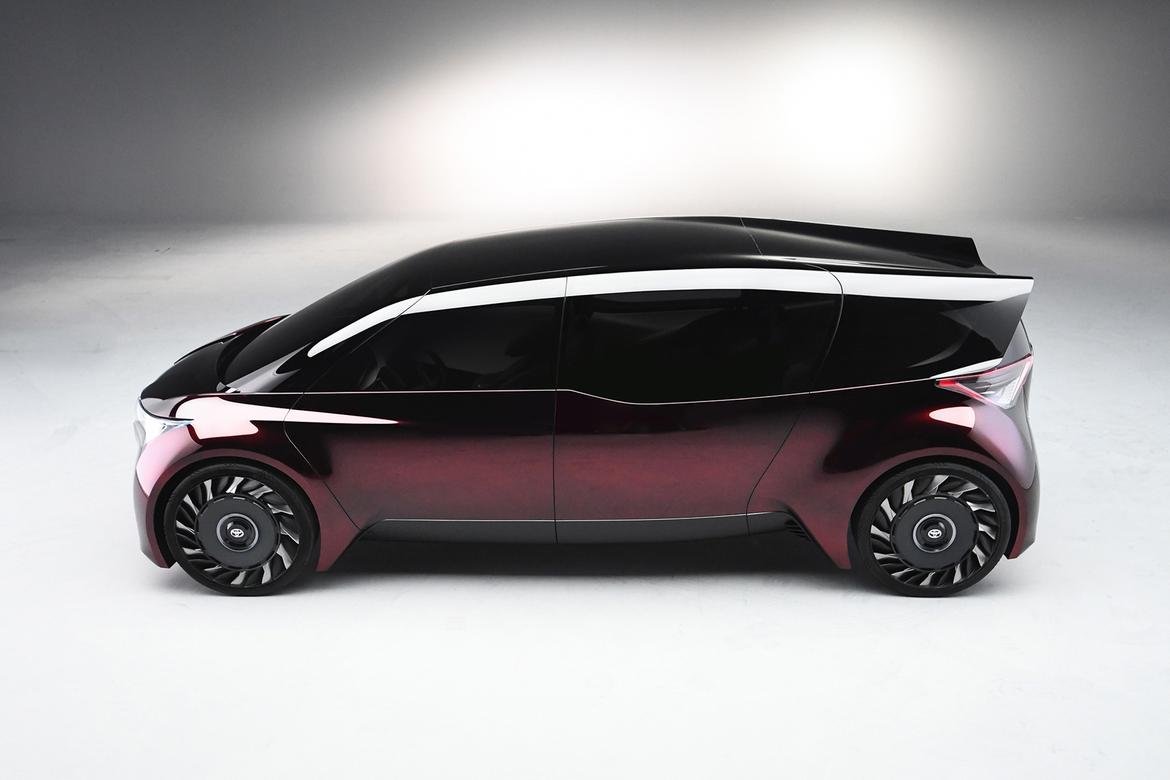
The name Fine-Comfort Ride may sound as sedate as an Avalon, but Toyota's wavy-shaped, deep-plum-colored fuel-cell concept is more wild than mild. Toyota used the recent 2018 Washington Auto Show in Washington, D.C., to show off the new zero-emissions future mobility concept with luxury accommodations for six and advanced technology features.
Related: Hyundai Unveils Nexo Fuel-Cell SUV With New Driver Aids at CES
The hydrogen-fueled electric vehicle, which previously has been shown in Tokyo and at January's Consumer Electronics Show in Las Vegas, also illustrates Toyota's continuing commitment to developing fuel cells as a practical alternative for sustainable transportation. Fuel cells emit no carbon dioxide, only water vapor (learn more here).
"We continue to take a portfolio approach that lets us pursue a range of technology solutions designed to meet the unique needs of consumers in different markets around the world. Our portfolio includes hybrid electric, plug-in hybrid electric, battery electric and fuel cell vehicles," said Tom Stricker, Toyota vice president of product and regulatory affairs, at the D.C. show.
Stricker added, "Toyota's long-term goal is to achieve a 90 percent cut in CO2 emissions from our new vehicle fleet globally by 2050."
Regarding the fuel cells, Stricker said, "What differentiates fuel cells from other zero-emission technologies is that they're most like what people are driving today. Fuels cells can typically go over 300 miles on a fill of hydrogen and can be refueled in less than 5 minutes, just like gasoline vehicles."
Wrapped in Comfort
The concept's wavy, aero-derived surfaces are striking, and the diamond-shaped body is widest at the second row of the three pairs of seats and tapers most to the rear. It is long (about 190 inches), low (65 inches) and wide (77 inches at the second row) on a long 136-inch wheelbase. The wheels are pushed to the corners and the design envisions a motor contained within each wheel, the fuel-cell stack at the front and hydrogen tanks under the floor, leaving maximum interior space for its size.
Toyota says the theme of the interior design is "being wrapped in comfort," and that starts with the futuristic wraparound bucket seats. The dash and displays wrap around the driver and passenger seats, and the seating arrangement is flexible to allow it to be used "as individual space or as a communication space." Among the showiest interior features are the side windows functioning as giant touchscreen displays.
Toyota, as well as Hyundai, Honda and GM among others, have continued to develop fuel-cell vehicles, and Honda and GM have formed a partnership. Toyota currently offers the production Mirai fuel-cell mid-size sedan in Southern California, where it has sold more than 3,000, and it has continued to work with partners to expand the network of hydrogen fueling stations there, where there are 31, with more due to open this year.
The company also is partnering to set up a dozen stations in the Northeast from New York to Boston. And it is building a facility at the Port of Long Beach, Calif., to generate water, electricity and hydrogen from agricultural biowaste to power its fuel-cell vehicles, including a fuel-cell truck, at the port.
's Editorial department is your source for automotive news and reviews. In line with 's long-standing ethics policy, editors and reviewers don't accept gifts or free trips from automakers. The Editorial department is independent of 's advertising, sales and sponsored content departments.


